

|
|
Flash Steam Gallery 5
Paul Windross |
Paul is the current holder of the AS record which he set at Kingsbury in 2012 and then broke again by a considerable margin in 2013, again at Kingsbury. This achievement won him the prestigious Windermere Trophy.
Do you have an engineering
background?
As a young lad my interests were wildlife and fishing, then Acomb
Secondary Modern, a brand new school, was built. The metalwork classes then
became my interest as we had a fantastic teacher who led me into the world of
model engineering and gave me a lifelong interest in mechanical things. While I
was there, I made a steam powered mill engine. There followed a year at
technical college that gave me a taste of various engineering disciplines. I
then went into the car body repair trade, as there were not many opportunities
for machinists.
Motorcycles were the next step and an interest in vintage motorbike sprinting. I tried trials riding with an old Greaves Scottish, but was not fit enough for that. The first sprint bike I built used a BSA twin engine, but was not that fast. Mind you, I was not the lightest of riders. Next, my Triumph Trophy was cannibalised and a series of machines made. Eventually, three National 750cc class records were broken, but this was also a story of when your back's again the wall with determination you can succeed.
A brief history of that record attempt.
On the start line the head gasket let go and the Nitro Methane fuel destroyed the head bolts and my best alloy cylinder head.
I rushed home with Steve and we found an old cast iron cylinder head and barrels but because the barrel fins had to be cut off to allow long strengthening bolts and the saw would not cut chilled cast iron, I broke them off with a hammer! A rush back to Elvington where two National records were broken which would also have been World records if I could have afforded to ratify them.Then in 1973 two 650cc Supercharged Triumph twins were connected together in a home made frame. All this work was created in 6ft x 8ft garden shed with an old £20 lathe, homemade drill and gas welding bottles. Well known correspondent Jim Reynolds commented 'Percy Thrower has a garden shed so has Paul Windross. Percy grows flowers; Paul builds record busting motorcycles- Paul has so little space that he has to wheel the bike out before he can get at the lathe'.
At Elvington in 1974 on a one way run, an average speed of 207.9mph over the flying ¼ mile was achieved, which at that time became the fastest speed by a motorcycle on that course. But it nearly didn’t happen! On the Saturday the primary drive sprocket teeth were damaged when the primary chain smashed. The teeth were built up with an electric welder, and I then filed them to shape.
A private record attempt at Elvington where I was hoping to set a National speed record over 200mph was not to be. There was a very strong cross wind (Wind sock horizontal) so a fairing could not be used and at a speed over 190mph the front wheel lifted and I had to shut off but it set a National class record at 187mph. It reminds me of the problems with the flash steam hydroplane propeller lifting and reducing my speed.
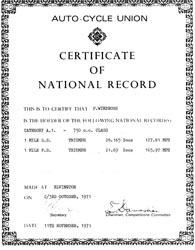 |
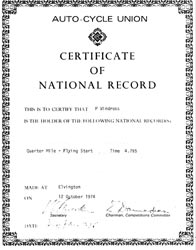 |
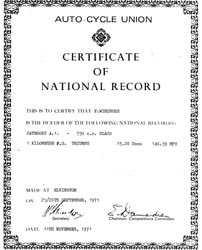 |
| 1971 One mile SS 127.81mph One mile FS 165.97mph |
1974 1/4 mile FS 4.795 secs. | 1971 one km FS 146.39mph |
The tales keep coming but for all the midnight oil and bike in the kitchen before a record attempt it was a time of comrades, very much like the tethered hydro scene. When there is no financial gain in a hobby or sport it is a pure pleasure to do. Tales of streakers at Santa Pod, ah I'd better get back to hydroplanes.
How did you start in hydro's and what made you choose the class you are competing in?
|
Due to serious family health problems, the motorcycle speed attempts finished and I returned to my first interests of wildlife and fishing. However, the model engineering was not to be denied so I started making an Allchin traction engine. My real interest was speed machines and for that reason it never got finished but it was buying a copy of Experimental Flash Steam by J.H. Benson and A.A. Rayman that created my interest in high-speed steam engines. Bob Kirtley’s series of article in Model Engineer during 1990 sealed my fate. I was hooked, rod, line and sinker, then followed years of trials and tribulations. |
|
It kept the mind alert developing the engine. Then the aerodynamics became a problem. Having such a large flat area under the boat meant trying to keep it on the water instead of it taking off.
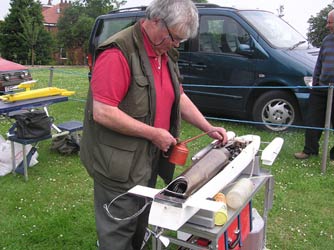 |
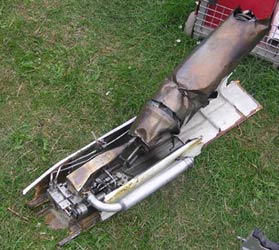 |
I had the first hull for a long time but it got smashed that many times I had to build another. The final smash was at Hull. Fred Graham, a friend of Tom Clement, took a very good set of pictures of a total write-off at Hull. (above) There's either 3 or 4 hulls that I've built, but can't remember exactly.
|
|
When my first hydroplane was built I had trouble launching it (nothing’s changed) so I took it where I used to go fishing, where it was a very fast flowing river and had it on a long cord to see how it was sitting in fast water. Another fisherman saw me and thought I had caught a barbell. Should have gone to specsavers. Left: Another crash at Hull this time 2006 |
Following another crash at Hull in 2011, a pair of front canard wings with Gurney flaps has kept it on the water, but at the cost of drag. The propeller skipping at 113mph was a problem for over a season but Ron Hankins, another enthusiast who had the same problem, gave me the solution.
During my first meeting of 2012 at Kingsbury it did over 122mph, which was memorable, as my language was not repeatable when told it was over 120mph, and I apologise. At Rowden things did not go right and overcooked the burners and carbon blocked a burner jet. However, at my last meeting of the year at Kingsbury 122.91mph was achieved just breaking Bob Kirtley’s record.
Current ambition or project?
Talking to Bob we are both hoping to crack 130mph. Watching Bob’s record
runs shows that he has the potential for higher speed, whilst analysing my own
runs reveals there are problems to be resolved, which hopefully would increase
the speed. As an engineering exercise I made a V twin flash steam engine to
power a model radio controlled speed record car and had the OK from one of the
sprint organizers to try it at one of their meetings. Unfortunately, like other
projects, it too has been put on the back burner. Also, a steam turbine is in
the process of being finished to power a hydroplane, but keeping the weight down
is a problem and one can’t ignore the dangers of the high speed of the rotor
assembly.
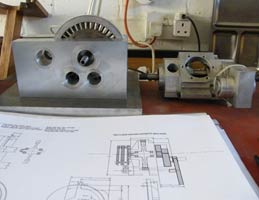 |
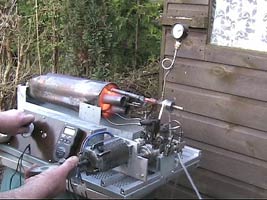 |
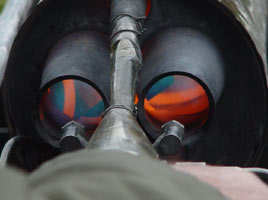 |
| Experimental turbine and V-twin | Testing steam nozzles | Paul likes his coils hot |
Is there any boat from the
past you would have liked to have seen?
I would have loved to see Donald Campbell’s runs at Coniston. All speed
record attempts appeal to me.
I wish all record competitors the best in their attempts. As I said to a team of local lads who hope to exceed 400mph on a motor bike "good luck is not in my vocabulary, if the machine is set up right and weather condition suitable you will achieve your goal". Happy record breaking to all enthusiasts.
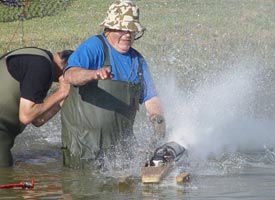 |
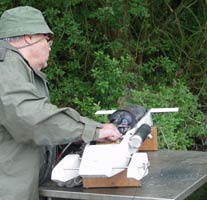 |
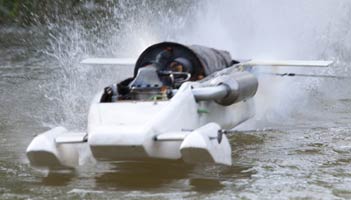 |
| Rowden 2009 | Kingsbury 2011 | Rowden 2012 Photo Mick Biddle |
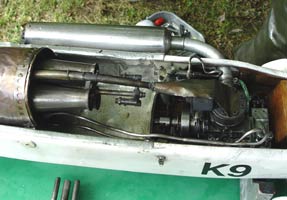 |
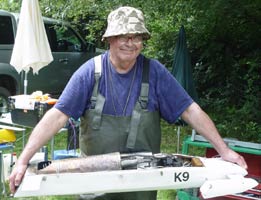 |
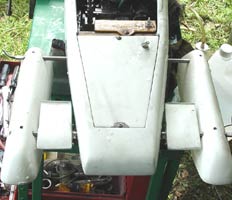 |
| Current power plant | AS record holder 2012 | Magic Gurney Flaps |
|
Paul retired from racing hydros in 2018 due to ill health but is still involved with state of the art motor cycles built with the specific aim of breaking records. Here he is seen receiving a commemorative photo at Elvington, still on a bike, but not with two nitro burning 750s for power. |
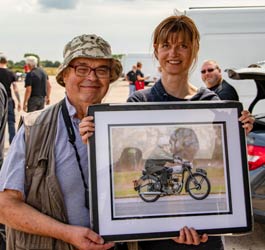 |
After closing in 2017, the York Raceway, now renamed the Melbourne Raceway reopened in 2020. Reduced in length at present to 1/8th mile it was ideal for Paul to get a another speed fix with a session of mobility buggy drag racing and runs in the 'world's fastest shed'. Built by Kevin Nicks, the shed has broken its own world records at Elvington and Pendine sands at speed in excess of 100mph.
 |
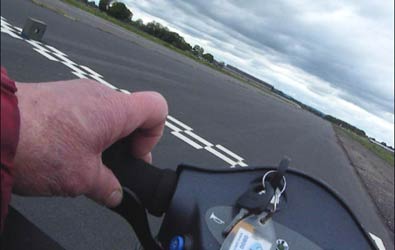 |
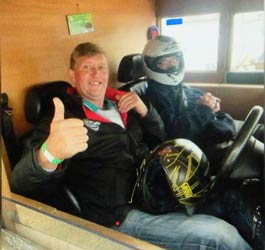 |
| Kevin and Paul with 'shed' | Throttle to the stop on the drag strip | 100mph in a shed? |
©copyrightOTW2013